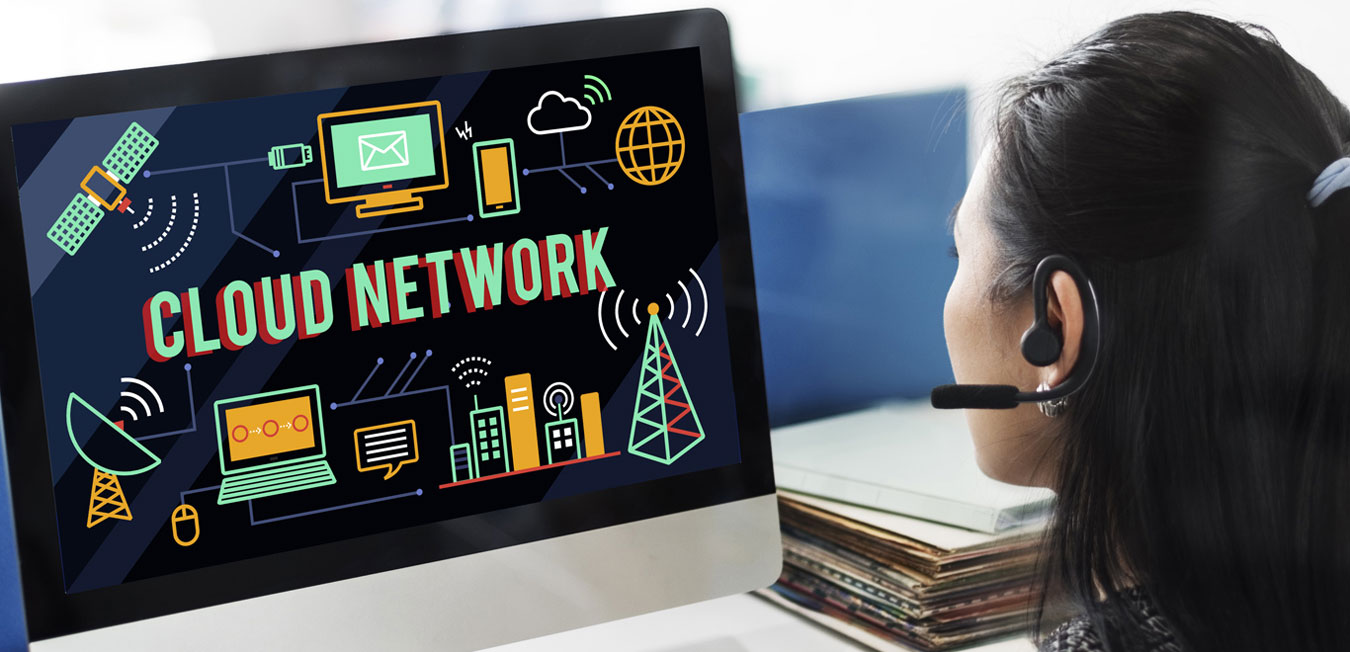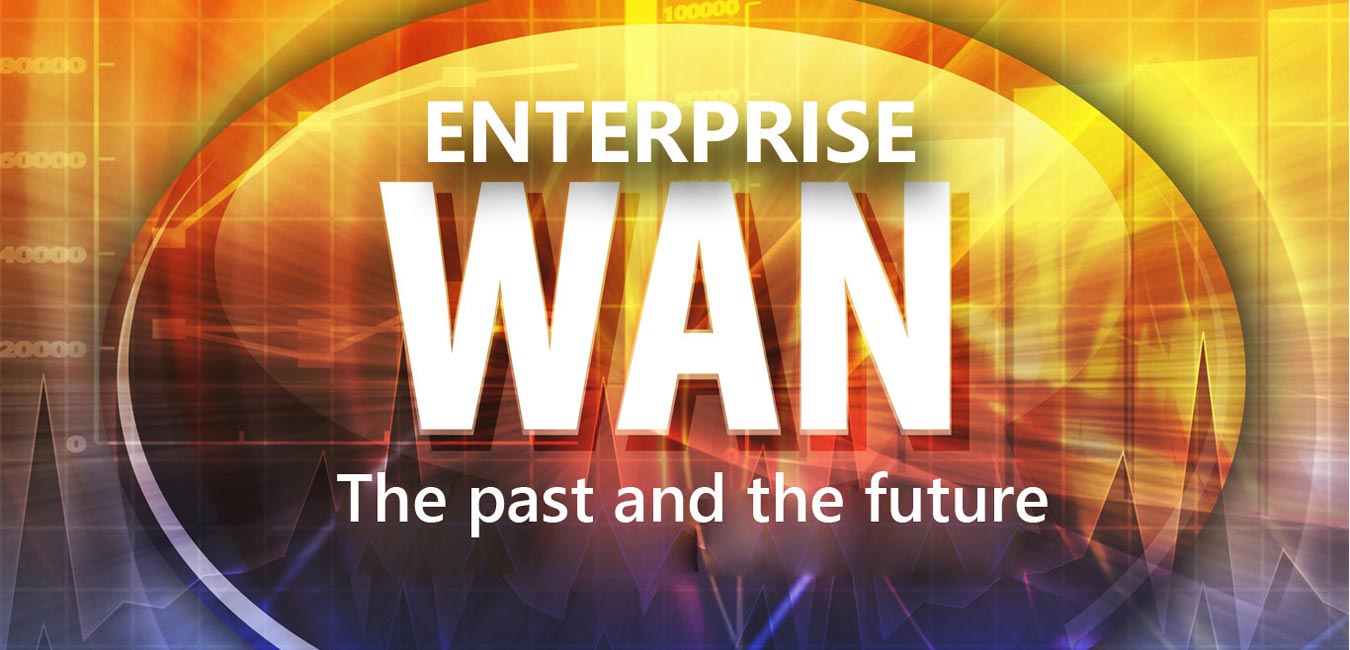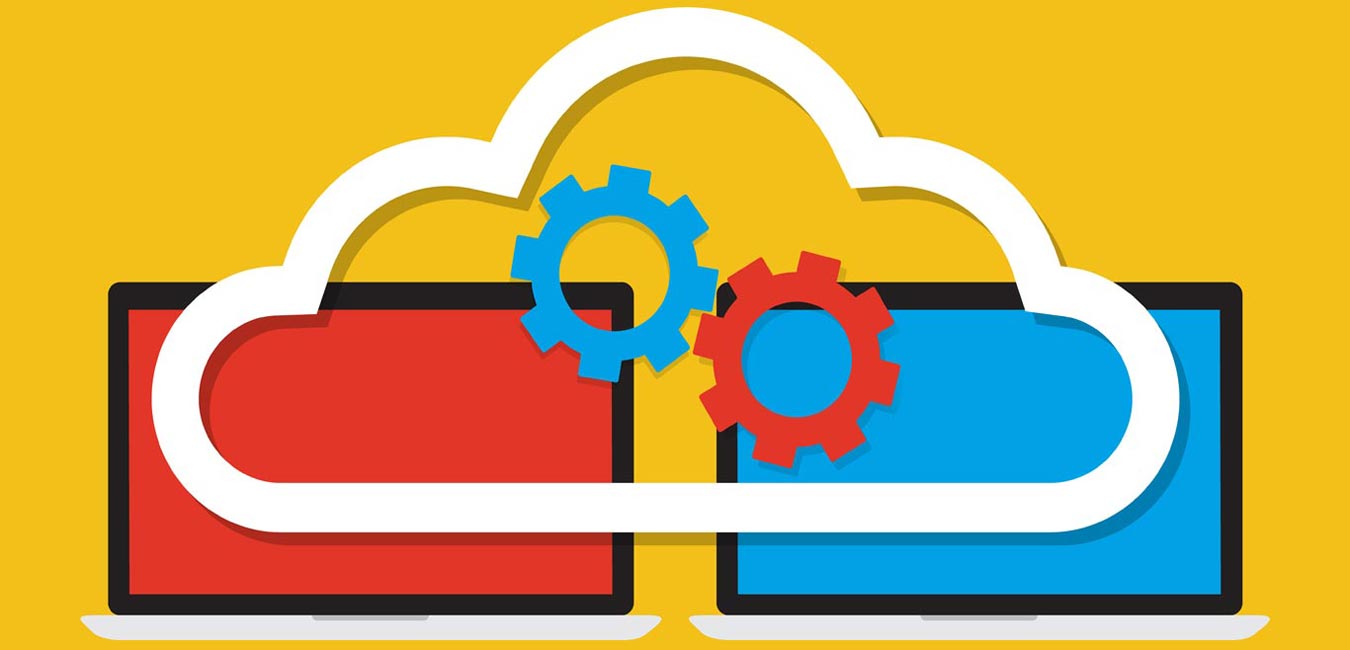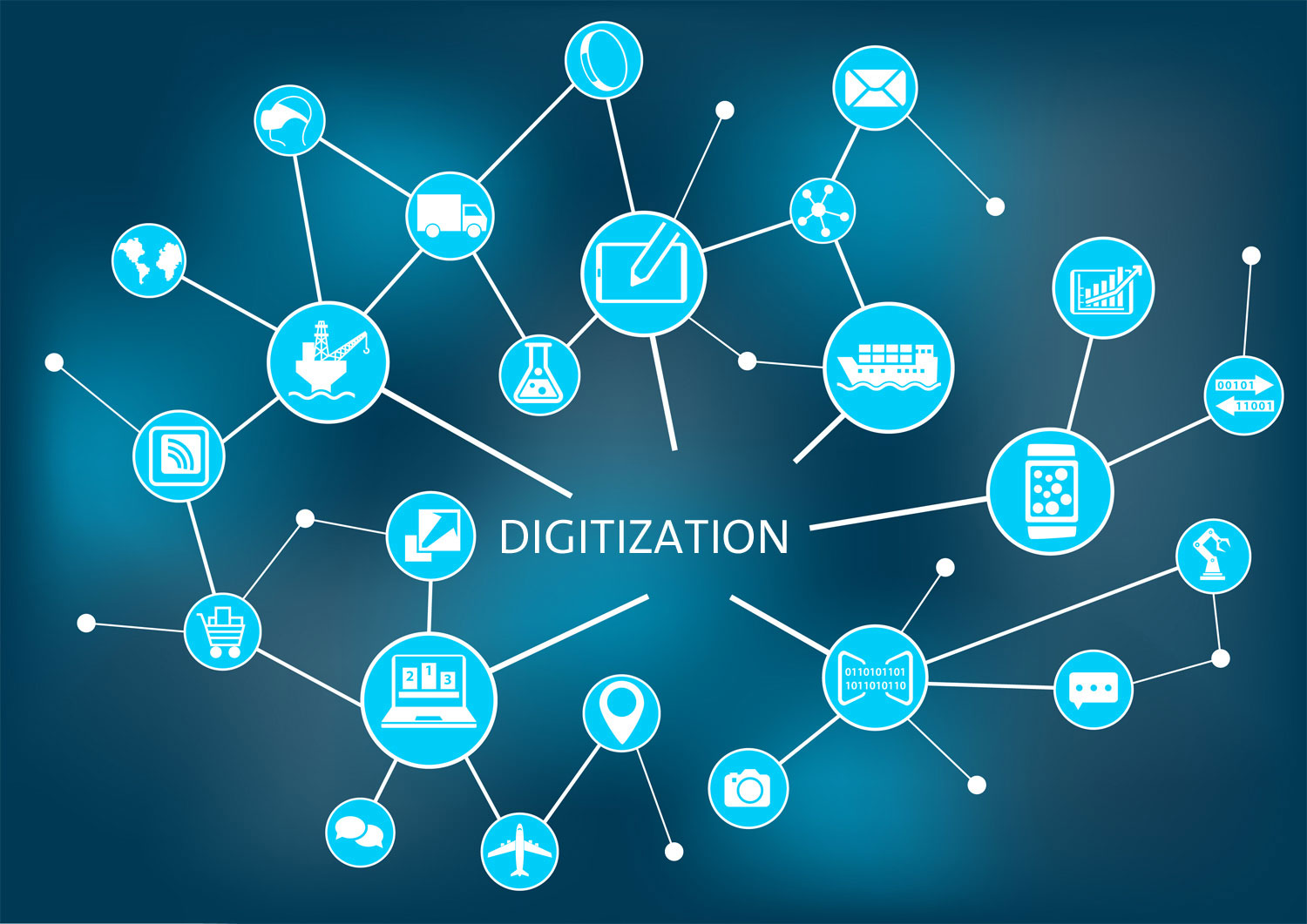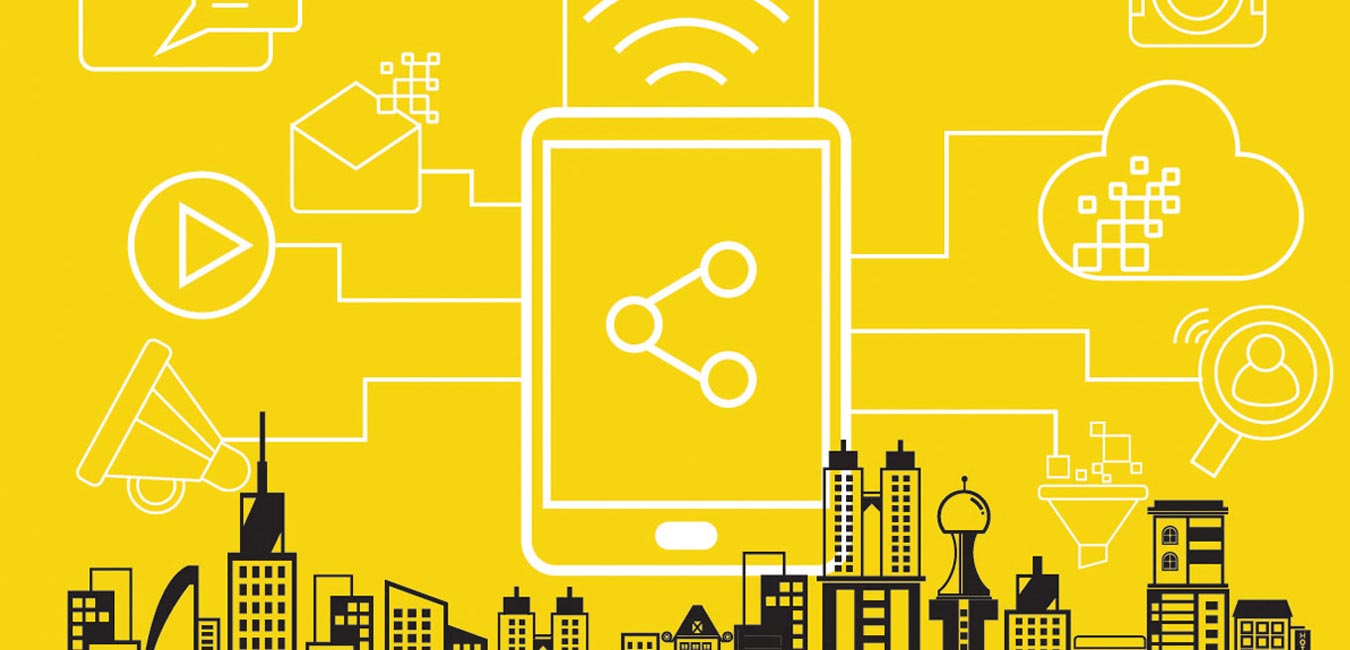Network as a Service (NaaS) explained
Running a business demands fast and reliable connectivity and this typically takes the form of investing in network hardware and staff for round-the-clock network management.
With NaaS (Network as a Service) this is all in the past. All you require now is a computer and an Internet connection to connect to your service provider network portal. NaaS is a cloud model, which provides businesses with network services over the Internet on pay-per-use or subscription consumption models. Network, the backbone of any company’s IT structure, is now available ‘as a service’!
Benefits of NaaS
The biggest advantage of NaaS is the complete control and flexibility that businesses can gain. Network administrators can exert total control on the allocation and provisioning of the bandwidth and as the network now exists in a virtual world, there is endless flexibility for network capacity and scalability. This flexibility also extends to the location of the business and of course, pricing models.
Shifting network services to the cloud saves the cost of investing in and running network infrastructure. This is guaranteed to result in immense cost savings for business that are running applications with thousands of users.
For companies with seasonal or sudden burst in workload NaaS allows instant ramp up and down of network capacity with just a few clicks.
With Network as a Service, businesses can eliminate all the hassle of managing and maintaining the network. The infrastructure and its complexities are invisible to the client; it is all taken care of by the service provider.
So why isn’t NaaS more widely adopted?
As with all big shifts to the cloud, the problems that emerge are grouped around security, compliance and reliability. NaaS is no different. While it is not a new concept, enterprises have been slow to embrace it mainly due to concerns around issues of availability guarantees, SLAs and concerns regarding security, data privacy and compliance.
It is safe to say that cloud computing will be the future platform for all businesses. As the move towards cloud accelerates, enterprises will need to consider network virtualization more seriously. After all, the benefits of cloud – speed, agility, low costs and scalability – have proven to be irresistible in the past.
We are Sify and we transform businesses for a digital world like no other. We are committed to building networks that allow businesses to provide information to its employees – anytime, anywhere and on any device.
What is SD-WAN and why do you need it?
To understand the importance of connectivity, let us imagine a day without it. Internet and phone lines are down. Your employees cannot access their mail; your offices cannot make or receive any calls; everyone from the CEO to the middle manager is left twiddling their thumbs as all their cloud hosted data and files are unavailable AND most importantly all your customer-facing applications are offline, turning away innumerable present and potential customers!
That reliable and highly available connectivity (Internet and telephony) is the lifeblood of the business world is irrefutable. In the present hyper-competitive scenario, organizations are increasingly turning to the latest technologies to achieve the best connectivity solutions at the most affordable prices. SD – WAN (Software defined – Wide Area Network) is the newest innovation to optimize WAN technology for faster, flexible and cheaper business connectivity.
SD – WAN explained
Enterprises have been relying on WAN networks to connect their branch offices; to ensure uninterrupted connectivity to remote locations they had to invest heavily in WAN infrastructure and bear the resulting maintenance costs. SD – WAN changed the landscape completely, allowing enterprises to only pay for the functionalities they require with their entire CAPEX investment amounting to small routers.
SD (Software defined) WAN is derived from the Software Defined Networking (SDN) technology, it utilizes software and virtualization technologies to create a WAN network that delivers faster, simpler and cost effective connectivity to businesses. SD –WAN achieves this by decoupling network software controls from the underlying hardware.
According to Gartner, SD-WAN has 4 main characteristics – it must be able to support multiple connection types, it must be capable of dynamic path selection, must be easy to configure and manage and should be able to support VPNs, and third party services.
So how does SD-WAN benefit businesses?
Application-driven technology
Applications are becoming increasingly complex and varied. The needs of these next gen applications can only be met with the flexibility and speed provided by SD-WAN’s use of hybrid networks, which provides secure access and fast connectivity at remote locations.
Security
Enterprise WAN networks are now open to a growing number of users accessing it from multiple points and from multiple devices. In such a scenario, security has become a weak point for WAN networks. SD –WAN provides enhanced security, delivered centrally via an API to cover your entire WAN landscape with comprehensive security solutions such as encryption and app firewalling.
Quick to deploy and easy to manage
One of the main advantages of SD-WAN is its ease of use and simplicity; it can provide extremely dependable connectivity to remote locations, which can be deployed within a few minutes and can be easily managed.
Cost efficient
Traditional WAN networks relied on expensive hardware which were seen as a necessary cost of doing business. With cloud-enabled connectivity, SD –WAN delivers enterprise-grade services without any CAPEX investment. With a number of service providers offering varied and competing packaged service offerings, businesses can now pick the functionality they need and pay for what they use.
Centralized control
Network managers have complete control and overview of their entire SD WAN network and all its components. This allows them to monitor the network in its entirety, optimize network usage and ensure centralized implementation of operational and security policies.
Whether you need to connect your HQ to remote branches or connect Data Centers across your organization, SD-WAN has transformed the network landscape by providing premium, secure, and simple cloud-enabled WAN connectivity.
With its obvious benefits, it is hardly surprising that SD WAN adoption is predicted to grow dramatically.By the end 2019, 30% of enterprises are expected to deploy SD-WAN technology,up from less than 1% today.
With the industry revenue expected to touch $6 billion by 2020, service providers are trying to attract new customers by offering a variety of SD-WAN based innovative services, which range from NaaS (Network as a Service) to specialized WAN appliances to cloud based WAN solutions. And as their legacy WAN technology comes up for technology upgrades, businesses will certainly consider these options.
Sify’s converged ICT ecosystem – comprising infrastructure and service offerings for cloud, telecom and Data Centers, allows it to offer enterprises end-to-end network services. Our SLA backed services will transform your business connectivity with enhanced network availability, reliability, performance and security.
5 factors to consider before picking an MPLS Service provider
In today’s hyper-connected and fast-paced global marketplace, connectivity is the lifeblood needed to keep businesses running smoothly. Enterprise, small or large, need reliable and fast communication networks to work and grow.
MPLS with its ‘labeling protocol’ provides organizations with a communication network that is completely dependable, fast, flexible and cost effective. The obvious and many benefits of MPLS Connectivity is driving businesses to consider switching to MPLS networks, but with the industry inundated by a wide range of services and management models the process of selecting an MPLS service provider can be long and complicated.
How do you evaluate the various telecom service providers and their offerings to get the best possible solution for your requirements? We list out the 5 key criteria that you need to consider.
Network coverage and reach of the MPLS service provider
The first thing that business need to check, is the network coverage offered by the service provider. Do all your desired locations fall under the network carrier’s footprint and in case you need global connectivity can they offer reliable international coverage? The coverage and reach of the service provider will directly impact issues such as latency, jitter, resilience and cost of the MPLS network.
Network project management and monitoring
Complex networks require constant management to run smoothly. Proactive management can lead to reduced costs and downtimes and enhanced security. Businesses need to understand the details of pricing and the scope of services offered under the head of network management and monitoring services. Do they monitor the entire network? Can they provide managed services to free up IT staff?
Complete MPLS Network Security
Security capabilities of the MPLS service provider need to be scrutinized closely. Businesses need to ensure that service providers are able to support and monitor the entire network closely and provide access to a dedicated security infrastructure including experienced NOC engineers to ensure guaranteed uptime.
Compare SLAs and check references
Another surefire way to assess the capabilities of the service provider is to check the SLAs (Service Level Agreements) offered. While experienced service providers with tested capabilities are usually willing to back their services with SLAs, it pays off to compare SLAs of several MPLS network providers. It is also helpful to look at their existing clients and check references to evaluate their performance.
Class of Service and Quality of Service
Businesses need to evaluate and understand the classes of service (COSs) offered by the carrier. How the carrier consolidates and prioritizes various traffic types will affect the Quality of Service (QoS). It is important that these COSs match your business requirement and the contract with the service provider clearly defines and states these service commitments.
While the above mentioned points form a base to shortlist the right MPLS network provider, other points, such as routing protocols, staff expertise, 3rd party partnerships, network architecture and future scalability capabilities, must also form a part of the decision making process.
Although cost always plays a big role in any business decision, alignment to your business’ current and future needs and long-term goals should be the deciding factor. After all, your MPLS Network will form the backbone of your business for a long time to come.
Sify Technologies is uniquely positioned to cater to the MPLS Virtual Private Network (VPN) connectivity requirements of Large & Emerging Enterprise customers through its SiteConnect™ services which enable cost-effective converged network solutions that enable point to point data, voice and video traffic. Sify’s carrier-grade next-generation network core offers stringent SLA-based converged data, voice and video traffic support.
Enterprise WAN: The past and the future
WAN – Wide Area Network, the three magic words that connect our world. Simply put, WAN is the network that connects local areas spread across the world.
The word network might conjure visions of tangled cables and blinking routers, but we have come a long way from the days when a 9.6 Kbps line was considered fast! Since its inception in the 1970s, WAN has been responsible for connecting people and facilitating business.
We trace the WAN journey through all its technological leaps from the 1970s to the present day and take a quick peek into the future of Enterprise WAN.
WAN evolution – 1970s to the present day
The late 1970s saw, what could be called, the start of WAN with X.25 Networks – a popular option with the maximum speed of 9.6 Kbps, which was used by many companies at that time.
The 1980s saw considerable innovations in WAN technology and through the decade network speeds of leased point-to-point lines kept improving. 1987 saw Cisco introducing routers to replace remote bridges.
At the beginning of 1990s, frame relay service was introduced and revolutionized the enterprise WAN industry by drastically reducing costs and increasing operational efficiency. In less than a decade, even the most reluctant organizations were using the technology.
The next big leap came with MPLS (Multiprotocol Label Switching) – a successor to Frame Relay. Since its launch in early 2000s, it has been widely adopted by the majority of enterprises. It provides an IP based service to deliver voice, data and video on one network. Over time,WAN optimization technology has been added to MPLS networks to squeeze out more bandwidth and lower costs.
Enterprise WAN in the coming decade
Plagued by performance and reliability issues, WAN technology could not get the desired flexibility and cost effectiveness that other Internet based services achieved.
Cloud computing platforms changed this. SD- WAN (Software Defined-WAN) is the technology which will be the foundation of the next generation of enterprise WAN. It is software controlled, virtualized Network delivered through the cloud; with all the cloud related benefits of scalability, cost effectiveness and fast deployment.
Now that cloud service providers are offering cloud aligned network solutions, organizations can finally get access to the next generation of WAN to keep pace with cloud-based application.
Organizations need to move from using widely disparate and hybrid networks to integrated cloud-enabled networking platforms that can provide seamless manageability, high performance and high degrees of resilience and security. Watch this insightful video on WAN transformation
What makes Hybrid cloud so popular?
As cloud adoption accelerated, service providers listened to their customers experiences and problems; tweaked and optimized their cloud solutions to create the Hybrid cloud solution – a cloud platform with the benefits of both the public and private cloud. Hybrid cloud allows enterprises to cherry-pick the cloud solutions that provide the perfect balance between their business needs and budgets.Its no surprise, that hybrid cloud has seen the fastest adoption rate in the last year, with over 70% of enterprises deploying hybrid systems. But what exactly makes it so popular in the business IT world?Here are the reasons..
Best of both clouds
Public cloud offers flexibility, scalability and cost benefits, while private cloud allows greater control and complete data security. With a hybrid cloud platform, businesses can merge the two cloud models to maximize benefits while minimizing the risks. Companies can keep sensitive data on their private servers and use public cloud for running less critical applications and larger workloads.
Cost benefits
After deploying hybrid cloud, businesses can count on a quantifiable reduction in costs. The pay per use models drive cost efficiency and reduce wastage of resources.
Enhanced security
With the flexibility of storing sensitive data on dedicated servers, the biggest cloud concern around security has finally been laid to rest. Businesses do not need to miss out on the advantages of cloud computing while prioritizing compliance and security.
Are their challenges in moving to Hybrid Cloud?
As with any migration to new systems, deploying and operating hybrid cloud also has its fair share of complexities. Building a complex hybrid system needs skills and strategy and can get expensive if not handled and planned well. The biggest challenge lies in integrating data with applications and ensuring compatibility across the two levels of infrastructure.
But with increasing adoption of hybrid cloud systems, it is obvious that service providers and businesses have found a way to successfully deploy and integrate hybrid platforms in diverse business settings.
With almost 95% businesses using cloud in some form or another, the business world has accepted cloud computing as an inevitable IT structure. The debate has moved on to the pros and cons of the various cloud platforms. With the hybrid model the search for the perfect platform, with all the advantages and none of the risks, is finally over.
Sify offers Public, Private and Managed Cloud services, leveraging enterprise-class technology to guarantee high availability, performance, scalability and security. The services are a testament to Sify’s proven expertise in Cloud services and are offered in customizable, cost-effective models that are easy to deploy and use. The breadth of Sify’s expertise in end-to-end IT services makes Sify the ideal partner to manage the full spectrum of the IT needs of all organizations, across sector and scale.
Private Vs. Public Cloud: How to choose the best fit
According to a recent survey conducted by Right Scale– 93% of businesses are using cloud technology in some form or another. Chances are that your competitors are already using cloud platforms and are growing their businesses at your expense. To stay competitive it’s imperative to leverage the benefits of cloud. Embracing the cloud is no longer a choice; it has become inevitable.
But migrating your business to the cloud is easier said than done, like all large and potentially expensive business decisions it requires detailed analysis. Among countless choices, one critical decision is choosing the right type of cloud platform, a cloud solution that fits the requirements of your business, now and in the future.
There is a lot of discussion around the competing benefits of private and public cloud; But what are the main differences between the two and which is the best fit for your business?
Private Vs Public Cloud
Public cloud
In a public cloud your data and applications are hosted on shared physical hardware owned by the service provider, your company has no hardware and maintenance costs at all – the service provider bears complete responsibility for the management and upkeep of the Data Center.
Public cloud offers unmatched scalability, businesses can ramp up or down within minutes and pay for only what they use. Economies of scale work in favor of public cloud systems, businesses have access to fast and reliable IT resources at a fraction of what it would cost them to build and run their own IT infrastructure.
Private Cloud
Private cloud or Enterprise cloud, is custom made infrastructure dedicated to your company, but can be hosted either on premise or in Data Centers run by service providers.
Security and control are the obvious advantages of the private cloud and for organizations with strict regulations and compliance obligations this is an absolute must. Private cloud also allows for greater customization of the hardware and other resources to serve specific business requirements.
A quick checklist to find out which cloud fits your business
While cloud platforms, on the whole, offer huge advantages over traditional IT ecosystems, enterprises need to carefully consider the pros and cons of the various cloud solutions in the market.
Public Cloud could be the right choice for you if:
- Your business is dynamic and has seasonal bursts of intense activity, requiring a corresponding spike in bandwidth.
- You need access to the latest IT resources to grow your business, but do not have the budget to build your own IT infrastructure.
- Businesses that have stringent security and regulatory requirements.
- Organizations with deeper pockets who can afford to spend on capital investment.
Because of its irresistible combination of speed, agility and scalability with cost effective models, cloud is now the default IT system for all businesses; it is definitely here to stay. As the technology matures, service providers and ICT companies will continue to create and offer a larger variety of options to its customers. But as always, the choice between money and security will be the key deciding factor for most businesses.
Sify offers Public, Private and Managed Cloud services, leveraging enterprise-class technology to guarantee high availability, performance, scalability and security. The services are a testament to Sify’s proven expertise in Cloud services and are offered in customizable, cost-effective models that are easy to deploy and use. The breadth of Sify’s expertise in end-to-end IT services makes Sify the ideal partner to manage the full spectrum of the IT needs of all organizations, across sector and scale.
Digital disruption, an opportunity to create adaptive businesses
The biggest digital disrupter of the decade has finally hit the IT industry! The convergence of new technologies – social, mobile, cloud and data analytics, has fundamentally changed the way business is being done. Enterprises are, naturally, under immense pressure to adapt their existing infrastructures, strategies and workforce to deal with these changes.
But during this hectic time, businesses need to pause and reflect on how they want digital transformation to impact their long-term strategy and growth. Do they want to fire fight the next wave of disruption or be ahead of the curve? Do they want to patch on technology cures or create a future ready system?
To ensure that digital transformation finally results in a strong and adaptive business structure, here are the 5 key areas of consideration
Invest in creating a Digital Vision
Transformation is a top down process: senior management, from across all departments, need to come together to create a long term and holistic strategy to deal with enterprise digital transformation.What is needed is a digital vision to articulate the immediate impact and long-term opportunities that could come up due to the transformation process.
100% Customer focused approach
To create a truly future focused and adaptive business, the customer must be kept at the center of all business functions: this is the fundamental on which enterprises need to base their long and short term digital strategy.
Enterprises that listen to its customers, present and potential, are the ones that will, not just flourish in the current digital rich environment, but will be better prepared to ride the next wave of disruption. To build customer loyalty and a differentiated brand, customer engagement has to be amped up to deliver continuously improving and truly interesting and innovative 360° customer experience.
Follow the data, but with a context
Even though organizations are using Analytics and Big Data mining to improve their bottom-line, often the sheer amount of data can leave managers with a sense of uncertainty.
What is needed here is Context. An open communication structure within the organization will encourage employees from different departments to weigh in on how to interpret and use the data.
Transform your employees
Transformation will only work as well as the people running it. For many employees digital transformation can be a disruptive and challenging process and targeted training and change management will help to keep the workforce motivated.
To change ingrained mindsets is not an easy task, but to create an agile business, inter departmental collaboration must become part of the work culture. Employees, new or existing, must be encouraged to stay updated and learn digital skills and should be assessed on their ability to contribute to the new system.
Embrace the culture of Innovation
Finally, organizations have to foster a deep-rooted culture of innovation and experimentation. Talented teams from across departments must collaborate to constantly experiment and test new technologies and processes to reach more and more digital users. This quick thinking and agile workforce will create a business that is not just ready to manage the next big change but will actually create the next new technology disruptor.
Digital transformation is not an end in itself; it is a continuous process. For enterprises to constantly stay ahead of the curve, digital culture must seep into its very core. It changes not just how companies deal with its customers, but also impacts its internal structures, functions and processes. It becomes part of the organization’s DNA.
We are Sify and we transform businesses for a digital world like no other. With our SMAC network, global inter-cloud connectivity, agile IT and seamless access across platforms, we transform the way enterprises do businesses providing a unified customer experience.
How Digital Transformation made eGovernance possible in India
Government and public service bodies were the late entrants into the digital world; slow and hesitant at the start they have now embraced digital with gusto. What started as online payment portals for electricity and phone bills has developed into a mission to provide digital access to all citizens.
The Digital Start
The first step to digitization started with online payment portals for public utilities, digitization of data such as land records, e-procurement projects and public sector banks sites.
The start was rocky, plagued with continuous downtime and untrained employees, but as Internet and digital technologies improved, these initial unwieldy digital platforms transformed into sophisticated Common Service Centers (CSC), access points connecting 2.5 lakh villages to a multitude of e-Services, from banking services to train ticketing and healthcare to agricultural information.
e-Governance matures – Aadhaar and India Stack
With Aadhaar and India Stack, the Government has finally incorporated Digital in its DNA. With more than a billion people registered – Aadhaar is the world’s largest biometric identity project. Launched in 2010, it is the ultimate example of IT technology joining hands with the government to radically change public service delivery.
The India Stack consists of digitized layers built on top of Aadhaar:e-KYC, eSign, Digital Locker and Unified Payment Interface. Together they create an end-to-end digital architecture that enables a paperless, cashless and presence less system. And the Government has made this user base of over a billion people available as an open API, enabling organizations and developers to innovate and build on the robust foundation of the India Stack.
Vision of Digital India
In 2015, the Government has laid out a clear vision for the digital future of India – to provide good governance that leads to inclusive growth, better jobs and access to services for all citizens. The Digital India Campaign, with a slew of policy initiatives, products and excellence centers, aims to fulfill this vision of making India truly Digital.
e-Governance has certainly come a long way since its inception, successful implementation of digital technologies has ensured, that the days of unending queues and unresponsive services are long gone. The next step is to move beyond providing services and become an instrument for good governance, transforming into a two-way channel of communication between the Government and its Citizens.
Watch the video below to see how Sify helps India Post, one of the oldest communications provider touching every part of the country, transform itself to a services centers while retaining the post and logistics.
Journey to a digital platform – 5 challenges businesses need to overcome
The IT industry is no stranger to digital disruption, over the last 3 decades, new trends and technological leaps have time and again changed the direction of the industry. The first wave in 1990s permanently transformed industries such as music, photography and video rental and the 2000s saw major disruption in industries like television, travel and recruitment. We now face the third wave of digital disruption, brought on by the huge amounts of rich data produced by social media and mobile technologies.
How quickly and efficiently businesses respond to this challenge, will determine whether they will be competitive and profitable in the coming decades.
Challenges of Digital Transformation
State of existing IT
Business need to know where they stand in terms of their IT readiness.For digitally mature organizations the change is manageable, but some businesses might have to restructure and invest more deeply to embrace the digital environment.
Change Management
The digital way of working is based on openness and creativity; it promotes a flatter and less controlled organization. Enterprises need to embrace and incorporate this into their work culture and existing workforce must be motivated to join this new work culture with an open mind.
Digital Employees
For a business to succeed in a digital world, it needs to be staffed with people who live digital and breathe data. To fully understand the digital experience offered to customers, managers have to be comfortable with the technology themselves.
Customer is the king
Customer experience must remain the primary focus while designing and implementing digital systems. How you want to engage and service your customer? What are the business models that you offer? These are some of the questions that will drive your ultimate digital goal.
Leadership
Clear vision and strong leadership are two vital factors for long term Digital Success. Digital transformation is a top down process and a focused leader with a clear, detailed roadmap will successfully lead the organization through its digital journey.
Transformation, digital or otherwise, is crafted and enacted by people. Therefore, it’s no surprise that the success of digital transformation lies more with employees, managers and other stakeholders rather than implementing technologies. The right people will enable organizations to deal with, not just this wave of digital disruption, but all future changes that come their way.
We are Sify and we transform businesses for a digital world like no other. With our SMAC network, global inter-cloud connectivity, agile IT and seamless access across platforms, we transform the way enterprises do businesses providing a unified customer experience.
SMAC Net: The digital platform of the future?
The digital world has always been fast paced, ready to evolve and innovate quickly. But new innovative technologies are disrupting the familiar digital landscape at a rate never seen before, forcing businesses to overhaul old systems and reinvent existing technologies.
To remain competitive in the face of this digital challenge, businesses must embrace the SMAC STACK, a new platform that harnesses the combined power of these new disruptive technologies.
SMAC STACK- explained
SMAC is a digital architecture based on the convergence of four diverse technologies;Social media, Mobility, Analytics and Cloud computing.
There are over 2 billion active social media users and more than 4.5 billion mobile phone users in the world today. No industry or organization can afford to ignore the opportunity these staggering numbers offer for connecting directly with consumers.
The huge amount of data generated by these users provides a rich source of information, which can reveal buyer patterns and behavior. Using advanced analytics, enterprises can get invaluable insights to make informed business decisions.
With data storage moving to the cloud, the physical restraints of server space management have disappeared. Cloud infrastructure provides a flexible, cost effective and scalable foundation, which can be leveraged by businesses to innovate and increase overall productivity.
The fusion of these technologies has created a completely new way of using digital processes and systems to engage with customers and drive business growth.
The SMAC effect
Some companies have already embraced the SMAC platform and incorporated it as part of their core digital architecture.
In India, ecommerce firms were the first to adopt SMAC technologies and are now benefiting from the SMAC effect;according to a report by UBS, the e-tailing market in India is set to grow 10 times by 2020 to $50 bn. Firms like Firstcry.com, Flipkart, Snapdeal and Amazon India are actively using the SMAC technologies to get a competitive advantage in this aggressive market.
Is SMAC the future?
If SMAC is the future, then that future is now. These four forces of digital technology have swept away old mindsets and systems and transformed businesses already. But implementing SMAC Stack is easier said than done, businesses need to fully understand how to integrate and optimize the new technologies and partnering with an experienced ICT service provider is essential. With decades of experience in providing IT services and Data Center solutions, Sify is perfectly placed to unlock the full potential of SMAC for your business growth.




